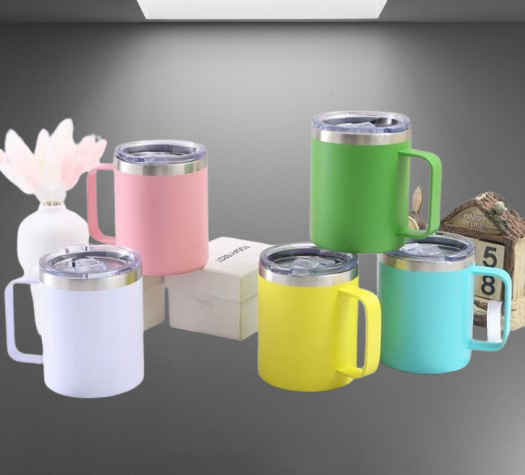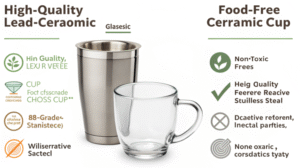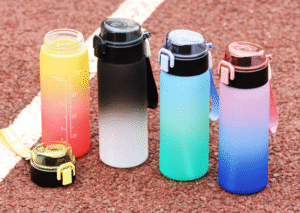Choosing a water bottle feels overwhelming. The wrong one can leak, taste funny, or be inconvenient, leaving you frustrated. Let's find the perfect bottle that fits your life.
The best water bottle depends on your needs. Glass offers the purest taste. Stainless steel is durable and excellent for insulation. Plastic is lightweight and budget-friendly. Each material serves a different purpose, so the ideal choice matches your daily activities, health priorities, and personal style.
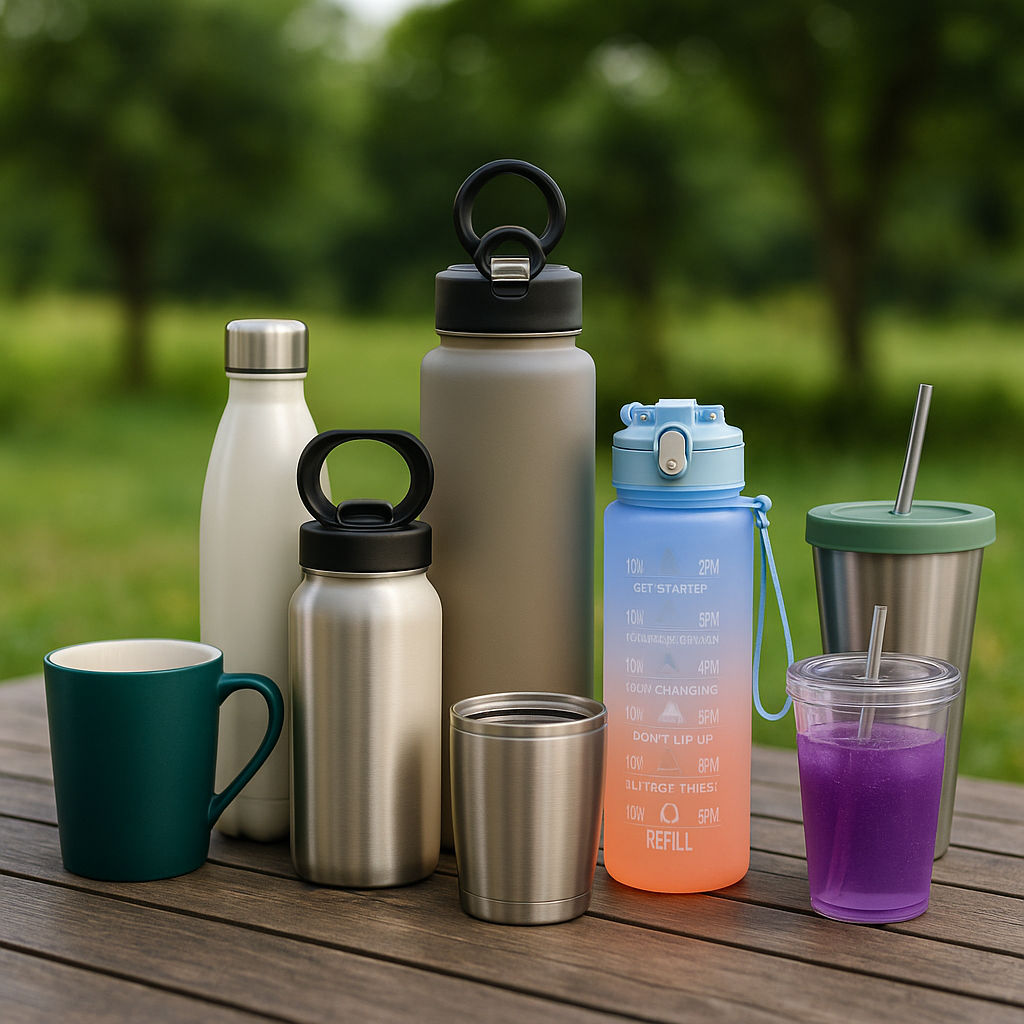
I've spent years in the drinkware industry, helping brands transform simple ideas into bestselling products. I've seen every material, every design, and every manufacturing challenge. The conversations always start with the same question: "Which material should we use?" The answer isn't simple because there is no single "best" bottle. It's about finding the right bottle for the right person and the right occasion. This choice affects everything from production cost to customer satisfaction. Let's dig into the specifics of each material to see which one truly fits your needs.
What is the healthiest water bottle to use?
Worried about chemicals from your bottle getting into your water? It's a valid concern, as some materials can affect your health and how your water tastes. Let’s identify the safest materials.
Glass, especially borosilicate glass, is the healthiest option because it's inert and non-porous. Food-grade stainless steel is a close second. It is non-reactive and very durable. When choosing plastic, always ensure it is certified BPA-free, like Tritan, to avoid potential chemical exposure.
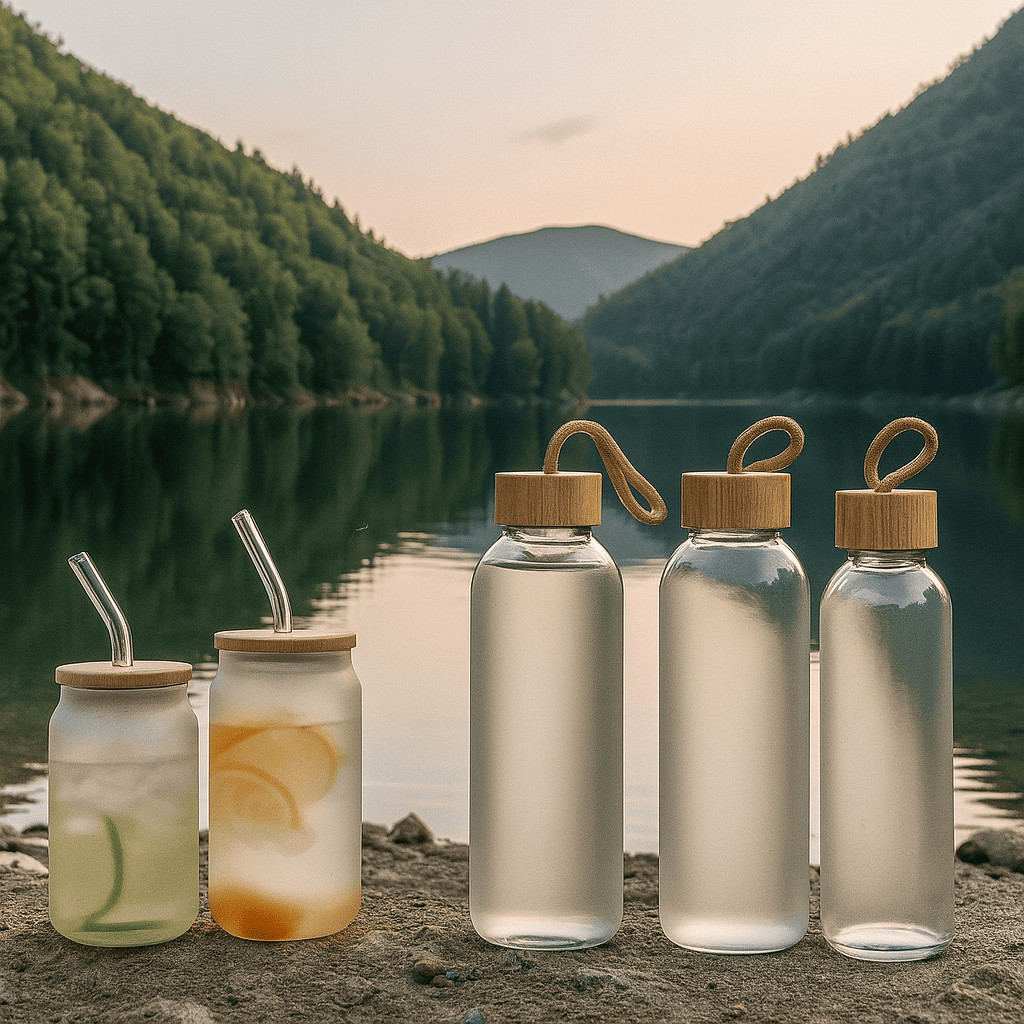
When product developers like Emily ask me about the "healthiest" material, the discussion quickly turns to material purity and safety standards. Glass is the king of purity. It doesn't hold onto flavors or leach chemicals, which is why it's a top choice for health-conscious brands. However, its fragility is a major drawback that we have to design around, often with protective silicone sleeves.
Material Purity Breakdown
For brands targeting health-focused consumers, stainless steel is a fantastic alternative. It’s crucial to specify food-grade types like 18/8 (or 304) stainless steel. This ensures it resists rust and doesn't impart a metallic taste. In my experience, I always push for rigorous testing. We must ensure there's no lead or cadmium, especially in the solder points or exterior paints.
Plastics have a complicated reputation. "BPA-free" has become a standard marketing claim, but we need to look deeper. Some manufacturers replace BPA with similar chemicals like BPS, which may have their own health concerns. That's why I guide my clients toward trusted materials like Tritan, which has a strong track record and is free of BPA, BPS, and other bisphenols. Verification through certifications like FDA and the stricter European LFGB is non-negotiable for building a trustworthy product.
| Material | Purity & Health Concerns | Best For |
|---|---|---|
| Glass | Inert, no leaching, no taste retention. | Purity-focused users, home or office use. |
| Stainless Steel | Generally safe (use 18/8), but check for lead in welds. | Everyday carry, insulation, durability. |
| Tritan Plastic | BPA-free, BPS-free, durable, and shatter-resistant. | Active lifestyles, sports, and kids' bottles. |
| Silicone | Food-grade is safe, flexible, and inert. | Travel, collapsible and lightweight needs. |
Which water bottle material is best for your lifestyle?
Your water bottle doesn't fit your active life. It might be too heavy, break easily, or fail to keep your drink cold during your commute. Let's match the perfect bottle material to your daily routine.
For an active lifestyle or gym use, a lightweight and shatter-proof plastic like Tritan is ideal. For office commuters who want drinks to stay hot or cold all day, an insulated stainless steel bottle is unbeatable. For travel, a collapsible silicone bottle is a space-saver.
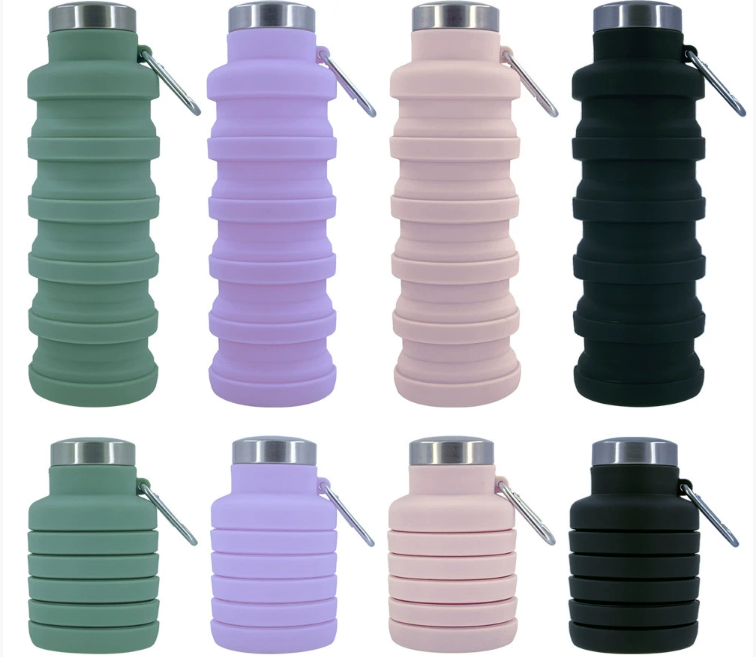
Every product developer wants to create a bottle that people love to use every day. The key is matching the material's properties to the user's lifestyle. I once worked with a brand that wanted to create the "ultimate yoga bottle." We debated between glass and stainless steel. While glass felt "purer" to them, the risk of it shattering in a quiet studio was too high. We ultimately chose a slim, powder-coated stainless steel bottle. It was durable, quiet to set down, and kept water cool through a 90-minute hot yoga class. It became a bestseller because we prioritized the user's actual environment.
Matching Material to Use Case
Thinking about the user's day is critical. A construction worker has very different needs than a college student. The worker needs extreme durability and great insulation, making a robust stainless steel bottle the only real choice. The student might prioritize a lightweight bottle that can be tossed in a backpack, making Tritan a great option.
The Rise of Hybrid Designs
We're also seeing more hybrid designs. A glass bottle with a thick silicone sleeve and a stainless steel cap combines the purity of glass with better durability and a premium touch. A stainless steel bottle with an innovative plastic quick-sip lid offers insulation and convenience. As a developer, the goal is to combine the best features to solve a specific problem for your target customer. This user-centric approach is what separates a good bottle from a great one.
| Lifestyle | Recommended Material | Key Advantages |
|---|---|---|
| Office/Commute | Insulated Steel | Keeps drinks hot/cold, durable, professional look. |
| Gym/Sports | Tritan Plastic | Lightweight, shatter-proof, high water capacity. |
| Travel/Hiking | Collapsible Silicone | Space-saving, lightweight, flexible. |
| Home/Wellness | Glass | Pure taste, aesthetically pleasing, easy to clean. |
What is the best type of water bottle to have?
You own several water bottles, but none feel quite right. One is too heavy, another sweats all over your desk, and another is a pain to clean. Let's find your all-around winner.
The best overall water bottle for most people is a 20-24 oz wide-mouth, double-wall insulated stainless steel bottle. It’s extremely durable, keeps drinks hot or cold for hours, doesn't retain flavors, and is easy to clean and fill with ice.
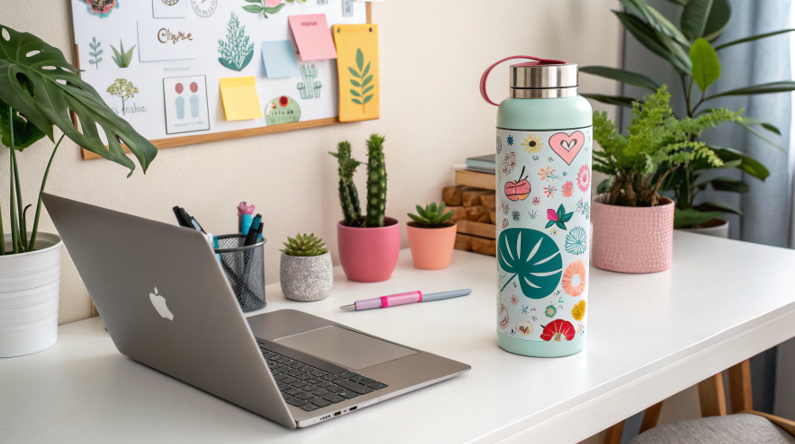
If I had to recommend one single bottle to cover most people's needs, it would be an insulated stainless steel one. It’s the closest thing to a "do-it-all" solution in the drinkware market. When I work with new brands entering the market, this is often our starting point. Its versatility provides a huge advantage. From there, we can customize it to fit their specific niche. A simple lid swap or a unique powder-coat finish can completely change the product's appeal, turning a standard item into a targeted, high-value product.
Why Versatility Wins
The magic of the insulated stainless steel bottle lies in its balance of features.
- Performance: Double-wall vacuum insulation was a game-changer. It prevents condensation (sweating) and maintains temperature for an impressive amount of time. I can leave iced water in my car on a hot day and come back hours later to a cold drink.
- Durability: These bottles can handle being dropped and knocked around. While they might get dented, they rarely break or become unusable. This longevity is a huge selling point for sustainability.
- Cleanliness: A wide-mouth design is crucial. It allows for easy cleaning with a bottle brush and lets you add ice cubes or fruit slices without a struggle. This simple design choice massively improves the user experience.
The best bottle is one a person reaches for without thinking. Stainless steel hits that mark for reliability and performance more than any other material.
Is it better to use a glass or metal water bottle?
You're stuck between a sleek glass bottle and a durable metal one. Glass offers pure taste but feels fragile, while metal is tough but you worry about a metallic taste.
Choose glass for the purest taste and a chemical-free experience, perfect for home or office. Choose stainless steel for superior durability, insulation for hot and cold drinks, and worry-free portability, making it ideal for travel and active use.
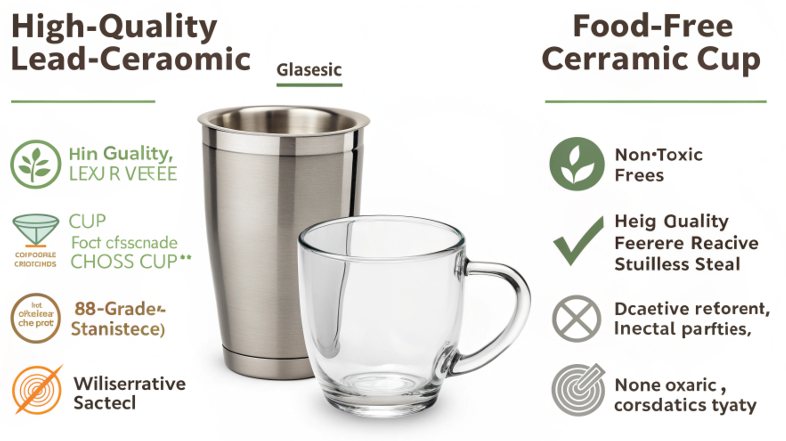
This is a classic debate I have with product developers. The choice between glass and stainless steel often comes down to brand identity and the target user’s primary concern: purity or practicality? There's no single right answer, only a series of trade-offs. I've helped brands succeed with both, but success comes from understanding and designing for these trade-offs. For example, a brand focused on wellness and essential oil-infused water should lean toward glass. A brand targeting outdoor adventurers must choose stainless steel.
A Head-to-Head Comparison
Let's break down the decision into key factors that matter for both consumers and developers.
- Taste and Purity: Glass wins here. It's completely inert, meaning it will never affect the flavor of your water. High-quality 18/8 stainless steel is excellent, but some sensitive users can occasionally detect a slight metallic note, especially when the bottle is new.
- Durability: Stainless steel is the clear winner. It's shatter-proof and can withstand significant abuse. Glass, even stronger borosilicate, will break if dropped from a sufficient height without a protective sleeve.
- Weight and Portability: Stainless steel is generally lighter than a comparable glass bottle, especially when you factor in the thick glass wall and silicone sleeve needed to make glass durable enough for travel.
- Insulation: Standard glass has no insulating properties. Your cold drink will sweat and warm up quickly. Double-wall insulated stainless steel, however, offers exceptional temperature control for both hot and cold liquids.
For a product developer like Emily, this comparison is key. The choice dictates not just the product's function but its entire supply chain, from material sourcing and cost to quality control and shipping logistics.
| Feature | Glass | Stainless Steel (Insulated) | Winner |
|---|---|---|---|
| Taste Purity | Perfect. No flavor retention or leaching. | Very good, but a slight metallic taste is possible. | Glass |
| Durability | Fragile. Prone to breaking when dropped. | Excellent. Shatter-proof and dent-resistant. | Stainless Steel |
| Insulation | Poor. No temperature retention. | Excellent. Keeps drinks hot/cold for hours. | Stainless Steel |
| Weight | Heavier, especially with a protective sleeve. | Lighter than a protected glass bottle. | Stainless Steel |
| Aesthetics | Clean, clear, and elegant appearance. | Versatile with many color/finish options. | (Subjective) |
Conclusion
The best water bottle balances purity, durability, and lifestyle. Glass is purest, but stainless steel offers the best all-around performance for most people. Your daily habits should guide your choice.
